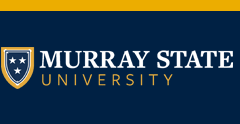Document Type
Audio Recording
Original Air Date
Summer 7-26-2016
Original WKMS Program interview aired on
Sounds Good, WKMS
Original WKMS story description
NASA's Apollo 15 mission launched on this day 45 years ago. One of the goals of the mission was to conduct scientific experiments on the moon using the lunar roving vehicle, dubbed the "moon buggy." Western Kentucky native Johny B. Russell was one of the instrumental designers of this vehicle. On Sounds Good, Matt Markgraf speaks with Sarah Hopley, Special Collections & Exhibits Librarian for Pogue Library, about Murray State University's impressive collection of his work and achievements.
Hopkins County native Johny B. Russell graduated from the Murray Training School in 1942 and enlisted in the U.S. Army Air Corps. After the war, he went on to get his bachelor's and master's degrees at Murray State, graduating in 1948 and again in 1950. He met his wife at Murray State (he was her chemistry tutor). He later worked at the Union Carbide Atomic Plant in Paducah, which led to his work on the NASA lunar roving vehicle.
At the atomic plant, Russell was put in charge of finding a way to reduce electricity usage. He developed a patent to achieve this and while demonstrating in California was approached by Boeing, offered a job to work for them as a nuclear physicist.
While at Boeing, Russell joined the team that had essentially two years to design the functionality of the lunar rover to be launched with Apollo 15. “You have things like a compass doesn’t work, but you need to tell a machine which way to go. Developing how to control the car because you don’t have gripping powers - because you’re wearing your suit. How to hold more than twice its weight. How to deal with the loss of gravity when you’re on the moon,” Hopley said.
Dubbed the "moon buggy" - and Russell called it that, too - the vehicle looks like a dune buggy. It's all-white with gold reflective paneling, tractor-like tires, titanium plates, two seats that look like lawn chairs, film equipment, wires and boxes.
Murray State University's collection of his work shows the process of working on the buggy, astronauts testing it in various states, advertisements produced by Boeing and some of Russell's other work. In his work on the B-1 bomber, he designed the process of telling the missile where it needed to go. There are also letters from NASA and atomic plant thanking him for his work and a letter from former vice president Dan Quayle inviting him to join the Republican Senatorial Inner Circle (nominated by former Congressman Phil Gramm).
Russell came back to Murray after he retired. He was involved with the university, working with the engineering department and helped create a 'cyber cave.' When working out his posthumous details, Murray State was asked to have a permanent exhibit of some of his artifacts, on display in Wrather Museum.
Additional Keywords
Sounds Good, Matt Markgraf, WKMS
Recommended Citation
Markgraf, Matt; Hopley, Sarah; and WKMS, "The Western Kentucky Native who helped craft the moon buggy" (2016). Special Collections on WKMS. 14.
https://digitalcommons.murraystate.edu/spec_coll_wkms/14

Comments
Text and audio originally posted to WKMS website. Original link: http://wkms.org/post/audio-slideshow-western-kentucky-native-who-helped-craft-nasas-moon-buggy ©2016 WKMS